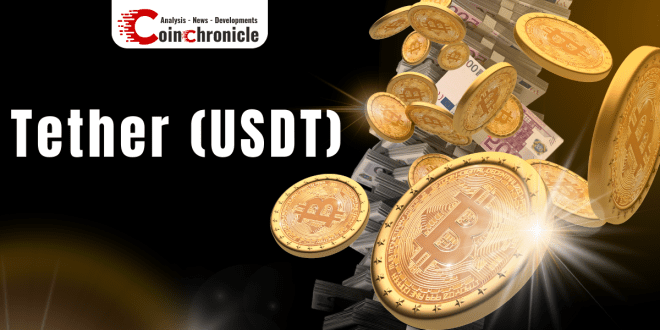Tether (USDT) is a type of cryptocurrency known as a stablecoin. Unlike traditional cryptocurrencies such as Bitcoin or Ethereum, which can experience significant price volatility, stablecoins are designed to maintain a stable value by pegging their value to a reserve of assets, typically fiat currencies like the US Dollar.
How Tether Works:
Tether achieves stability by backing each token with a 1:1 reserve of traditional currency, meaning that for every USDT in circulation, there should be an equivalent amount of US Dollars held in reserve. This is meant to provide a sense of security and trust in the value of Tether.
Benefits of Tether:
- Price Stability: The primary benefit of Tether is its stability, making it more suitable for transactions and as a store of value compared to more volatile cryptocurrencies.
- Liquidity: Tether is widely used in the cryptocurrency market for trading pairs and as a bridge between different exchanges, providing liquidity and ease of movement for traders.
- Speed of Transactions: Transferring Tether is generally faster than traditional banking transactions, especially for cross-border payments.
Concerns:
- Transparency: Tether has faced criticism for its lack of complete transparency regarding the actual reserves backing the tokens. Some argue that there is insufficient proof that Tether holds the equivalent amount of fiat currency as claimed.
- Regulatory Scrutiny: The stablecoin market, including Tether, has been under increased regulatory scrutiny. Concerns about potential regulatory actions and the impact on Tether’s operations have been raised.
Examples of Stablecoins:
- USDC (USD Coin): A stablecoin pegged to the US Dollar, with each USDC token backed by a corresponding US Dollar held in reserve.
- DAI: A decentralized stablecoin that uses smart contracts on the Ethereum blockchain to maintain its peg to the US Dollar.
- TrueUSD (TUSD): Another stablecoin pegged to the US Dollar, claiming to be fully collateralized and regularly audited.
Impact on the Blockchain Industry:
- Market Stability: Stablecoins like Tether play a crucial role in stabilizing the volatile cryptocurrency market by providing a reliable value peg.
- Increased Adoption: The use of stablecoins can encourage broader adoption of blockchain technology by reducing the risks associated with price volatility.
- Regulatory Developments: Tether’s impact on the blockchain industry is closely tied to regulatory developments. Increased scrutiny may lead to changes in the way stablecoins operate and are regulated.
In summary, Tether is a stablecoin designed to maintain a stable value by pegging it to traditional fiat currencies. While it offers benefits like price stability and increased liquidity, concerns around transparency and regulatory scrutiny remain. The impact of Tether on the blockchain industry depends on how regulatory developments unfold and its ability to address transparency issues.
 Crypto Journal: Analyses, News, and Developments – Coin Chronicle Platform Coin Chronicle is your go-to source in the dynamic world of cryptocurrencies.
Crypto Journal: Analyses, News, and Developments – Coin Chronicle Platform Coin Chronicle is your go-to source in the dynamic world of cryptocurrencies.




